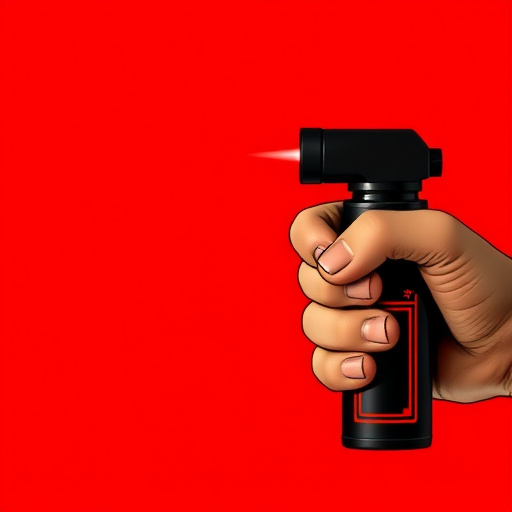Pepper spray, with capsaicin from chili peppers, is an effective defense against aggressive wildlife like bears, causing irritation and temporary blindness upon contact. Correct usage enables escape or shelter during an attack. Crucial post-use decontamination steps at home include removing contaminated clothing, rinsing exposed skin and eyes with water for 15 minutes, and seeking medical attention if breathing was affected. For your living space, vacuum carpets, wash all clothing and equipment with hot water, wipe down surfaces, and ventilate the area. Proper post-exposure care involves decontaminating at home, keeping wounds clean, monitoring for infections, and carrying bear spray in known wildlife habitats with regular servicing.
Staying safe in wild environments requires knowing how to defend against animal attacks, especially from bears. This article equips you with essential knowledge about bear spray as a powerful defense mechanism. We delve into its composition, effectiveness, and how it can deter aggressive encounters. Additionally, we provide crucial pepper spray decontamination steps for safe home use, post-exposure care tips, and prevention strategies to minimize the risk of animal attacks. Learn these vital skills to enhance your outdoor safety.
- Understanding Bear Spray: Its Composition and Effectiveness
- Pepper Spray Decontamination Steps for Safe Home Use
- Post-Exposure Care and Prevention Strategies for Animal Attacks
Understanding Bear Spray: Its Composition and Effectiveness
Bear spray, also known as pepper spray, is a powerful defense tool designed to deter aggressive wildlife, particularly bears. Its composition includes capsaicin, the active ingredient found in chili peppers, which causes irritation and temporary blindness when sprayed into an animal’s eyes and respiratory system. This irritant disrupts an animal’s sensory perception, enabling you to create a safe distance from potential harm.
The effectiveness of bear spray lies in its ability to provide quick protection without causing permanent damage. When used correctly, it can disable an attacking bear long enough for you to escape or seek shelter. It’s crucial to follow decontamination steps after use, especially when practicing at home. This involves rinsing eyes and skin thoroughly with water and removing any contaminated clothing to prevent residual effects from pepper spray on your person.
Pepper Spray Decontamination Steps for Safe Home Use
After a bear spray encounter, proper decontamination is crucial for ensuring your safety and preventing any adverse health effects. Start by removing all clothing that may have come into contact with the spray, including shoes, and place them in a sealed plastic bag. Thoroughly rinse all skin and eye areas exposed to the spray with cold water for at least 15 minutes. If breathing became difficult during the incident, seek immediate medical attention.
For decontaminating your living space, vacuum any carpets or upholstery that may have been sprayed, using a vacuum bag specifically designed for hazardous waste disposal. Wash all clothing, gear, and equipment with hot water and soap to remove any remaining pepper spray residue. Rinse and wipe down all surfaces that came into contact with the spray. Lastly, open windows and doors to ventilate the area, ensuring no lingering spray particles remain.
Post-Exposure Care and Prevention Strategies for Animal Attacks
After an animal attack, proper post-exposure care is crucial for preventing further complications and infections. The first step in this process involves thorough decontamination using pepper spray decontamination steps at home. Start by removing any contaminated clothing or accessories and wash the affected area with mild soap and water. Rinse thoroughly to ensure all traces of pepper spray are eliminated.
Additionally, keep the wound clean and monitor it for signs of infection such as redness, swelling, or pus. If an infection develops, seek medical attention promptly. As a preventive measure, consider carrying bear spray when venturing into known wildlife habitats. Regularly service and replace your bear spray according to the manufacturer’s instructions to ensure its effectiveness.
Bear spray, or pepper spray, can be an effective defense against animal attacks, especially in areas with high bear populations. Understanding its composition and how it works is crucial for safe usage. Following proper decontamination steps after exposure is essential for preventing further irritation and ensuring post-exposure care. By learning these pepper spray decontamination techniques at home, you can enhance your safety and well-being while enjoying outdoor activities in potential wildlife habitats.
